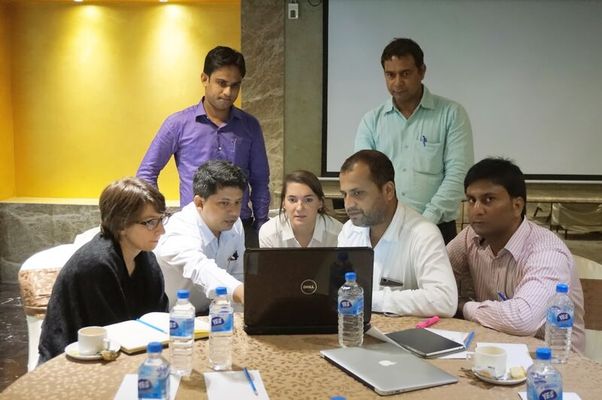October finds our team deep in the pipeline selection process. After months of partner outreach and desk research to source potential innovators, 180 inspiring organizations from across the globe nominated themselves or others.
This year, when sourcing innovators, we placed an emphasis on those in Southeast Asia, Latin America, and the United States. We were also on the lookout for innovators working on solutions for elderly care and at-home care management, non-communicable diseases (NCDs) such as diabetes and cardiac disease, health IT, inventory management, and point of care diagnostics.
Noteworthy trends among our pool of nominees emerge when we look at the innovators working in some of these spaces of focus.
Limited innovation in end-of-life care. Populations are aging around the globe – the WHO projects that by 2050, twice as many people will be over age 60 as are today. Given this demographic shift, we expected to see a surge of innovation in this space. However, among our nominees, only 3% are working on palliative and end-of-life care, and only 4% are working on rehabilitation and long-term care.
Varying levels of focus on NCDs across regions. One-fifth of our nominees focus on NCDs, and of those, 38% work on innovations in care delivery. 28% work in technology-enabled patient engagement, such as mobile apps that help patients self-manage diabetes or remotely connect with their doctors.
Globally, NCDs are the leading cause of death. Most of these deaths (nearly 75%) are concentrated in low- and middle-income countries, where NCDs are in fact surpassing infectious diseases as a cause of mortality. Despite the global presence of NCDs, we saw varying levels of NCD-targeted innovations across regions, ranging from North America (where 40% of all nominees work on NCD innovations) to Africa (where only 12% of nominees had an NCD focus).
Lots of interesting ideas – and young companies – in health IT. Examples of technology innovations include an interactive online platform in the United States that helps patients and providers make treatment decisions that fit unique patient preferences and circumstances; a tablet app in Brazil designed to facilitate communication and learning for people with disabilities; a mobile health solution in Kenya that helps parents monitor pregnancy and their child’s development; and a teleradiology service for remote areas in India.
Over half (60%) of the nominees whose innovations involve technology have been operational for only three years or less. So with this exciting opportunity comes a problem – corporates want to partner with companies that have evidence and proof of concept, but companies in this space are young and haven’t had time to accrue that yet.
We will be reviewing finalist applications in the coming months, and revealing our newest cohort in January. And in the meantime, if you’re interested in information and insights about what is happening around the world in the health innovations space, feel free to contact Senior Project Manager Anne Katharine Wales at anne.wales@duke.edu

